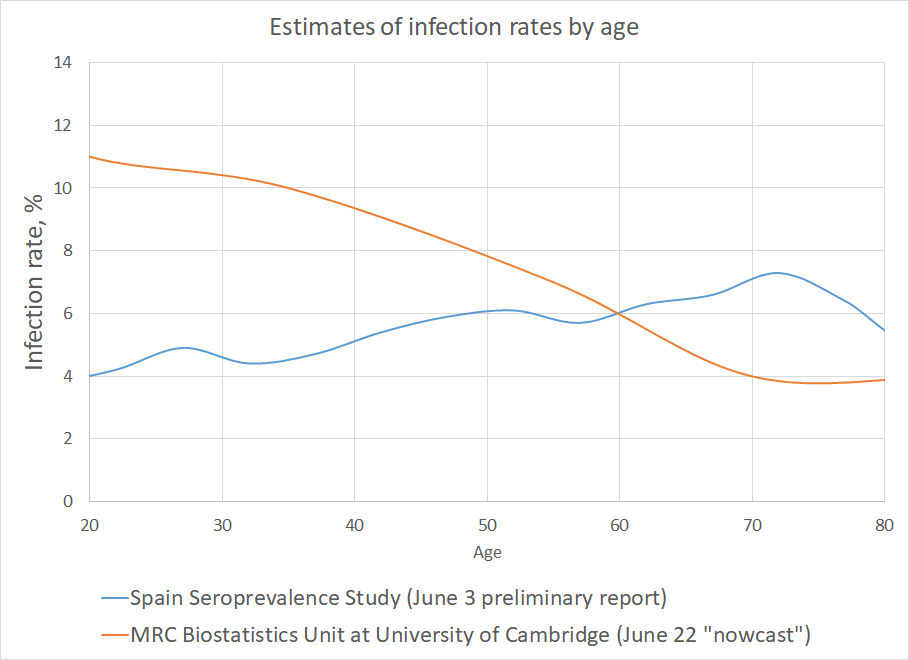We know that once infected, people of older ages are disproportionately susceptible to severe illness and death from COVID-19, and data from countries around the world consistently bear this out. Interestingly, however, the rate at which different ages are infected can vary significantly from country to country.
COVID-19’s infection rate – or attack rate – is a key variable for understanding the impact of the pandemic. After all, widespread infection is one of only two ways (the other being vaccination) that we will achieve some form of lasting herd immunity – assuming such immunity is achievable.
For (re)insurers tasked with translating impacts of the pandemic from a general population to an insured population, it is important to know how infection rates vary by age (along with socioeconomic differences in infection rates, the severity of infection, and other related factors). While data on infection rates by age is limited, country-by-country comparisons can be illuminating.
Consider the chart below, which shows estimates of the infection rate across ages 20 to 80 in Spain and the U.K. The first is taken from the June 3 preliminary report on the Spain Ministry of Health’s seroprevalence study, looking at the presence of COVID-19 antibodies in a sample of more than 60,000 individuals intended to broadly reflect the entire Spanish population. The second is from the June 22 ”nowcast” from the MRC Biostatistics Unit at the University of Cambridge, which is informed in part by data from England’s National Health Service Blood Transfusion service on antibody testing.

There is a clear difference in the shape of infection rates by age from these two sources. Whereas infection rates in Spain generally increase with age to a peak for people in their early 70s, the opposite is seen in England, with infection rates decreasing with age to a low for people in their early 70s.
Some contributing factors to consider:
- We would expect variation in the infection rate by age since many of the risk factors for infection – such as how people mix, or whether they are essential workers or retired and able to isolate at home – vary by age group.
- We would expect the age-shape to infection rates may vary by country, due to behavioral, cultural, and socioeconomic differences, as well as age-related differences in government mitigation and suppression strategies.
- We would expect some differences between these two particular examples as the infection rates estimates were made at different dates and at different points in each country’s pandemic.
- We also need to bear in mind that different modelling approaches, together with any biases in the underlying population sample, may lead to different estimates of the infection rate by age.
However, even allowing for these factors, the difference in shape between these two estimates is remarkable.
Summary
COVID-19 infection rates can vary significantly by age, and the age-shape can vary significantly by country. It is important to recognize that the results shown here are estimates of pandemic experience in Spain and England so far, and trends in infection rates by age may look very different in the future. This is a reminder that care needs to be taken before applying results derived from one population to another. Global insurers, in particular, will need to bear this in mind when trying to estimate the impact of the pandemic on their insured books.







